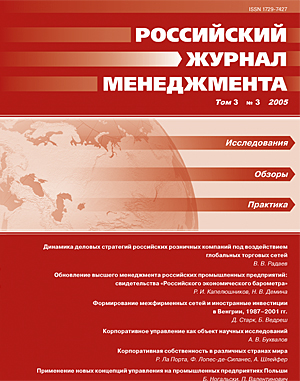Формирование межфирменных сетей и иностранные инвестиции в Венгрии, 1987–2001 гг.
Аннотация
Для построения модели, отражающей процесс формирования сетевых связей между предприятиями с момента их зарождения, а также влияние на эту сеть иностранных инвестиций на протяжении всего периода стремительной и фундаментальной хозяйственной трансформации, мы собрали полные данные об истории изменения форм собственности 1696 крупнейших венгерских предприятий в течение 1987–2001 гг. Сочетая методы сетевого анализа и динамического анализа последовательности сетевых позиций, мы выявили различные способы использования фирмами сетевых ресурсов, которые помогают им справляться с неопределенностью, скрывать или реструктурировать активы, добывать информацию и обеспечивать легитимность. В этот период вплетенная в сети собственность росла, стабилизировалась и привлекала все больше иностранного капитала. Тесно связанные сети рекомбинантной собственности оказались жизнестойкими и, по сути, интегрировали в себя иностранные инвестиции. Несмотря на то что мультинациональные корпорации, используя свои филиалы и дочерние компании, разрушали сети совместных предприятий, мы получили свидетельства в пользу того, что одновременно они выстраивали другие, не менее прочные сети. Результаты нашего исследования позволяют предположить, что развивающиеся хозяйства не обязательно оказываются перед вынужденным выбором между глобальными и локально укорененными сетями.
Скачивания
Библиографические ссылки
REFERENCES IN LATIN ALPHABET
Загрузки
Опубликован
Как цитировать
Выпуск
Раздел
Лицензия
Статьи журнала «Российский журнал менеджмента» находятся в открытом доступе и распространяются в соответствии с условиями Лицензионного Договора с Санкт-Петербургским государственным университетом, который бесплатно предоставляет авторам неограниченное распространение и самостоятельное архивирование.





